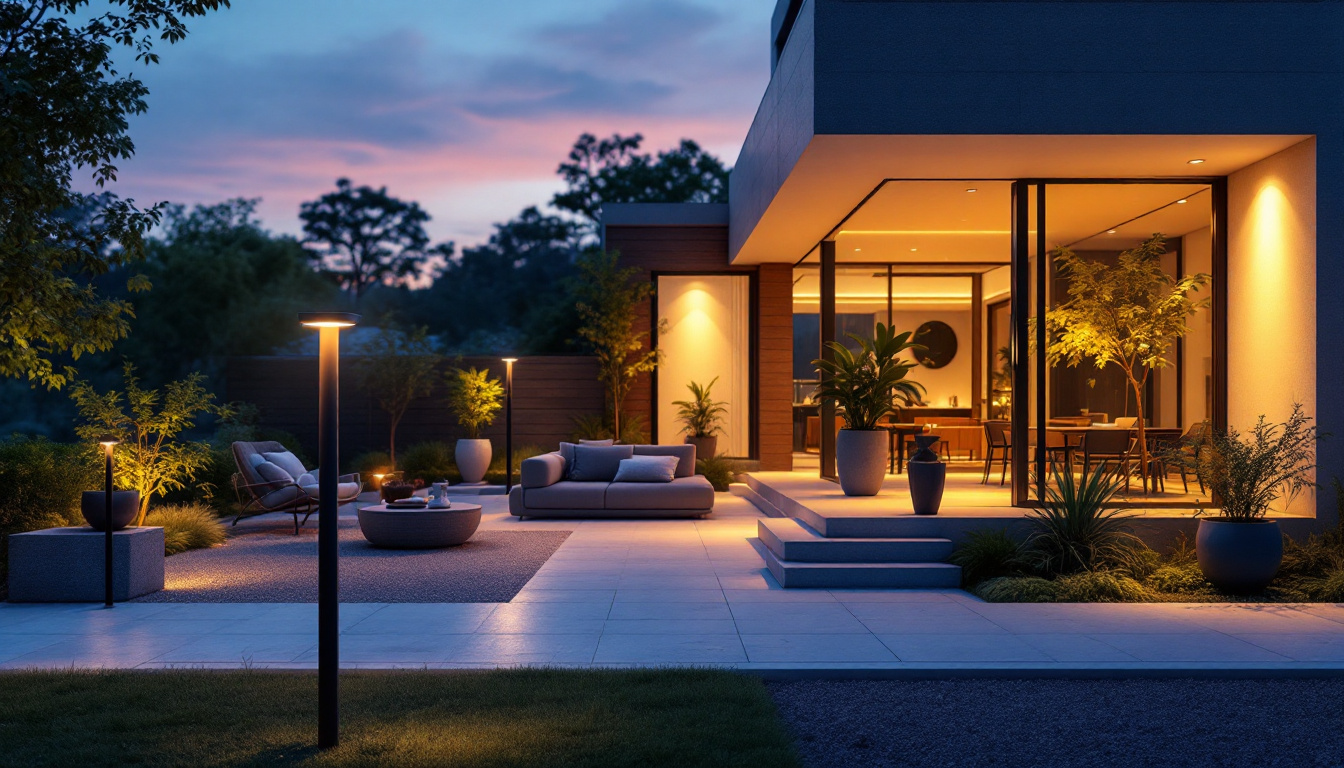
In the rapidly evolving world of horticultural lighting, the use of LED plant lamps has gained immense popularity among lighting contractors. These lamps not only promote plant growth but also provide energy efficiency and longevity. However, despite their advantages, many lighting contractors make critical mistakes when selecting and installing these fixtures. Understanding these common pitfalls can help contractors improve their service and ensure optimal results for their clients.
Before delving into the common mistakes, it’s essential to grasp the fundamental aspects of LED plant lamps. These specialized lights are designed to emit wavelengths that are beneficial for plant growth, mimicking the natural sunlight spectrum. Unlike traditional lighting options, LED lamps are more energy-efficient and have a longer lifespan, making them a preferred choice for both commercial and residential horticultural applications. Moreover, the compact design of LED lamps allows for versatile installation options, whether in small indoor gardens or expansive greenhouse setups, providing flexibility to growers of all levels.
In addition to their efficiency and lifespan, LED plant lamps also generate less heat compared to conventional grow lights. This characteristic is particularly advantageous for indoor gardening, as it minimizes the risk of overheating plants and allows for closer placement of lights without damaging foliage. Furthermore, many modern LED systems come equipped with adjustable settings, enabling growers to fine-tune the light spectrum and intensity according to the specific growth stages of their plants, thus optimizing their overall health and productivity.
One of the most significant errors lighting contractors make is selecting the incorrect light spectrum for specific plant types. Different plants require varying wavelengths for optimal growth. For instance, blue light is crucial during the vegetative stage, while red light is essential for flowering. Contractors must ensure they are familiar with the specific needs of the plants they are lighting to avoid stunted growth or poor yields. Additionally, some plants may benefit from a full-spectrum light that encompasses both blue and red wavelengths, promoting a more balanced growth cycle. Understanding the unique light requirements of various species can lead to healthier plants and more abundant harvests.
Furthermore, the importance of light spectrum extends beyond just the growth phases; it also plays a role in the plants’ overall health and resilience. For example, ultraviolet (UV) light can enhance the production of certain compounds in plants, such as essential oils and antioxidants, which can improve flavor and nutritional value. By incorporating a broader range of wavelengths, including UV, contractors can create a more dynamic growing environment that not only supports growth but also enhances the quality of the produce.
Another common mistake is underestimating the importance of light intensity. While LED lamps are energy-efficient, they can still vary significantly in terms of brightness. Contractors often fail to assess the intensity required for different plants, leading to inadequate lighting conditions. This can result in poor photosynthesis and ultimately affect the health of the plants. The distance between the light source and the plants also plays a crucial role in determining the effective light intensity; too far away, and the plants may not receive enough light, while too close can lead to light burn.
Moreover, the growth stage of the plants should dictate the intensity levels as well. Seedlings and young plants typically require less intense light compared to mature plants, which can thrive under stronger illumination. By utilizing light meters to measure the intensity at various distances, contractors can ensure that their plants receive the optimal amount of light for each growth phase. This attention to detail not only fosters robust plant development but also enhances the efficiency of energy use, further maximizing the benefits of LED technology in horticulture.
Proper installation of LED plant lamps is crucial for achieving the desired results. Unfortunately, many contractors overlook specific installation guidelines, which can compromise the effectiveness of the lighting system. A well-executed installation not only maximizes energy efficiency but also enhances plant growth, leading to healthier and more productive crops. Thus, understanding common pitfalls in the installation process is vital for anyone looking to optimize their indoor gardening or greenhouse operations.
The placement of LED lamps is critical to their performance. Many contractors make the mistake of installing lights too high or too low, which can lead to uneven light distribution. This can create ‘hot spots’ where some plants receive too much light while others are left in the shadows. A thorough understanding of the growth habits and light requirements of the plants being illuminated is essential for optimal placement. For instance, leafy greens may thrive under lower light conditions, while flowering plants often require more intense light. Utilizing adjustable mounting systems can also help in fine-tuning the height and angle of the lights as plants grow and their light needs change.
Although LED lights generate less heat than traditional lighting options, they still produce some heat that needs to be managed. Contractors often neglect to consider heat dissipation in their installations. Failing to allow for adequate airflow around the lights can lead to overheating, which can damage both the fixtures and the plants. Proper ventilation and spacing are essential to maintain an optimal growing environment. Additionally, incorporating heat sinks or reflective materials can help dissipate heat more effectively, ensuring that the temperature remains within the ideal range for plant growth. Monitoring temperature and humidity levels with sensors can provide real-time data, allowing for timely adjustments to the installation as needed.
While LED lights are generally more energy-efficient than other types of lighting, contractors sometimes overlook the importance of energy management in their projects. Understanding the energy consumption of different LED fixtures can lead to significant cost savings for clients.
Many contractors fail to check the energy ratings of the LED lamps they choose. Not all LED lights are created equal; some consume more power than necessary for the same output. By selecting fixtures with higher energy efficiency ratings, contractors can provide their clients with better long-term savings and a reduced carbon footprint.
Lighting contractors often do not take the time to educate their clients about energy efficiency and the benefits of LED technology. Providing clients with information on energy savings, operational costs, and the environmental impact of their lighting choices can enhance their overall satisfaction and lead to repeat business.
Once the installation is complete, the responsibility does not end there. Ongoing maintenance and support are crucial for ensuring the longevity and effectiveness of LED plant lamps. However, many contractors fail to offer adequate post-installation services.
Regular inspections are vital for identifying any issues with the lighting system before they escalate. Contractors often neglect to schedule these inspections, which can lead to prolonged periods of inadequate lighting. Establishing a routine maintenance schedule can help ensure that the lighting remains effective throughout the plant growth cycle.
When issues arise with LED plant lamps, contractors should be prepared to offer troubleshooting support. Many contractors do not have a clear plan for addressing potential problems, leaving clients frustrated and without solutions. Providing a reliable support system can enhance client trust and satisfaction.
Understanding the growth cycles of various plants is essential for effective lighting design. Many contractors make the mistake of not tailoring their lighting solutions to the specific growth stages of the plants being cultivated.
Plants go through several growth stages, each requiring different light conditions. Contractors often install a one-size-fits-all solution, neglecting to adjust the lighting as plants progress from germination to flowering. This oversight can hinder growth and reduce overall yields. A tailored approach to lighting, with adjustments made throughout the growth cycle, can significantly improve plant health and productivity.
Seasonal changes can also impact the effectiveness of LED plant lamps. Contractors sometimes overlook the need to adjust lighting schedules and intensities based on seasonal variations in natural light. By being mindful of these changes and adapting the lighting accordingly, contractors can provide a more conducive environment for plant growth.
In today’s digital age, technology plays a crucial role in optimizing lighting systems. However, many contractors fail to leverage available technology to enhance their services.
Smart lighting solutions, such as programmable timers and sensors, can significantly improve the efficiency of LED plant lamps. Contractors often overlook these options, leading to inefficient lighting schedules and wasted energy. By integrating smart technology into their lighting designs, contractors can offer clients a more effective and user-friendly solution.
Data analytics can provide valuable insights into the performance of lighting systems. Contractors who do not utilize data to monitor light levels, energy consumption, and plant growth miss out on opportunities for improvement. Implementing data-driven approaches can help contractors optimize their lighting solutions and enhance client satisfaction.
Lighting contractors play a vital role in the successful implementation of LED plant lamps. By avoiding common mistakes such as selecting the wrong spectrum, improper installation, neglecting energy efficiency, and failing to provide adequate support, contractors can significantly improve their services. Understanding the unique needs of plants, leveraging technology, and maintaining open communication with clients are essential for achieving optimal results.
As the demand for energy-efficient and effective horticultural lighting continues to grow, contractors must stay informed about the best practices in the industry. By continually educating themselves and their clients, they can ensure that they are providing the best possible solutions for plant growth and sustainability.
In summary, avoiding these common pitfalls not only enhances the performance of LED plant lamps but also builds trust and loyalty with clients. A commitment to quality, education, and adaptability will set successful lighting contractors apart in this competitive field.
Ready to elevate your lighting game and avoid the common pitfalls outlined in this article? Choose LumenWholesale for your next project and experience the difference quality lighting can make. Our extensive selection of spec-grade LED plant lamps is designed to meet the unique needs of your plants, ensuring optimal growth and energy efficiency. With unbeatable wholesale prices and the convenience of free shipping on bulk orders, you can trust that you’re getting the best value without any hidden fees. Don’t compromise on quality or cost—visit LumenWholesale today and secure premium lighting solutions that promise reliability and performance for every project.

Explore the impact of RGB LED technology on lighting contractors’ profitability.

Discover the key factors that distinguish top lighting contractors in the realm of outdoor lamp post covers.

Discover how retrofitting LED lighting can revolutionize your lighting projects by boosting efficiency, reducing energy costs, and enhancing sustainability.

Discover how LED exterior lighting can revolutionize your lighting projects by boosting efficiency and reducing costs.